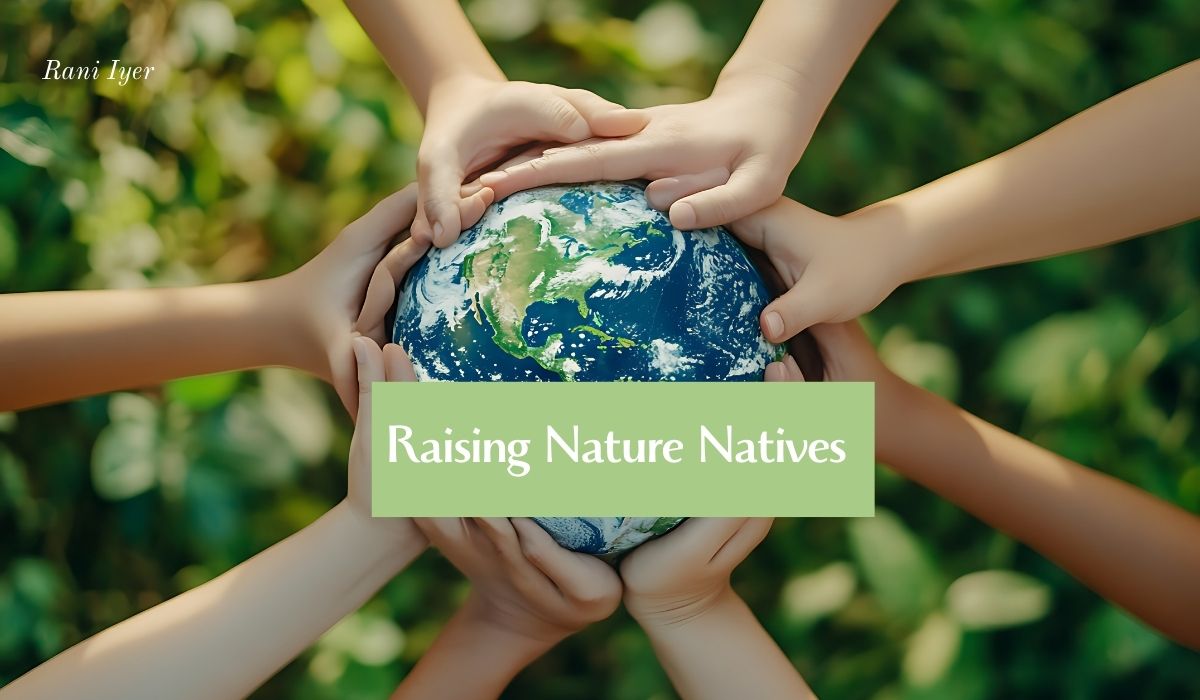In today’s fast-paced, screen-saturated world, many children are growing up with limited opportunities to connect with the natural world. Yet, research consistently shows that kids who spend meaningful time outdoors—whether in the garden, at a park, or in a forest—develop stronger physical health, deeper creativity, and a profound sense of belonging. At Ecolabs, our mission is to nurture Nature Natives—children who grow up feeling connected to the earth, empowered as stewards of the environment, and supported in their journey of discovery.
This blog explores why developing nature connection from an early age is vital and provides evidence-based tips for parents and teachers to foster this bond in ways that are simple, joyful, and sustainable.
The Role of Parents and Teachers in Raising Nature Natives
Parents and teachers are the most influential guides in a child’s journey toward becoming a Nature Native. By modeling curiosity, patience, and respect for the environment, adults create conditions for children to feel safe and inspired outdoors. Research in developmental psychology shows that children mirror adult attitudes—when caregivers express wonder at sunset or gently handle a caterpillar, children learn to approach nature with reverence rather than fear. Teachers, in particular, can extend these lessons by weaving outdoor activities into the curriculum, framing scientific inquiry as exploration, and linking classroom concepts to real-world ecological systems. Parents can complement this by encouraging unstructured play, family walks, and seasonal traditions rooted in nature. Together, these consistent messages from home and school give children the confidence to see themselves not just as learners in nature, but as belonging to it.
Why Nature Connection Matters for Children
1. Cognitive and Academic Benefits
Studies show that outdoor learning environments boost problem-solving skills, enhance focus, and even improve standardized test performance. Time in nature stimulates curiosity, a foundation for lifelong learning.
2. Emotional and Mental Health Benefits
Nature exposure reduces stress, anxiety, and symptoms of ADHD. Children who regularly engage in unstructured play outdoors demonstrate higher levels of resilience and emotional regulation.
3. Physical Health and Development
Climbing trees, running across fields, or simply walking on uneven trails improves motor skills, balance, and cardiovascular health. Nature offers a joyful way for kids to meet their daily movement needs.
4. Environmental Stewardship
Children who feel connected to nature are more likely to adopt sustainable behaviors as adults. This early connection lays the groundwork for the next generation of environmental leaders—true Nature Natives.
Evidence-Based Tips for Parents and Teachers
- Start with Small, Daily Connections
Invite children to notice the shapes of leaves, the sounds of birds, or the colors in the sky. Even 10–15 minutes of nature daily boosts mood and attention. - Create Nature-Rich Learning Spaces
Bring plants into classrooms or start small gardens at home. Green schoolyards reduce behavioral issues and improve social cohesion. - Encourage Unstructured Play Outdoors
Give children freedom to climb, dig, and imagine. Unstructured play fosters executive functioning and creativity. - Integrate Storytelling and Culture
Share stories, songs, and folklore about the natural world. Encourage nature journaling or eco-storytelling to build emotional connection. - Model Curiosity and Care
Demonstrate wonder—pause to notice a butterfly or study a mushroom. Children learn through imitation, and your awe becomes theirs.
Seasonal Activities to Nurture Nature Connection
Children experience the magic of nature most vividly when it shifts with the seasons. Parents and teachers can weave seasonal activities into daily routines to make outdoor learning joyful and memorable. In spring, planting seeds and observing sprouts teach patience and the cycles of growth. Summer invites water play, bug safaris, and cloud-watching to spark curiosity. In autumn, leaf collecting, nature art, and harvest celebrations connect children with abundance and change. Winter, though often overlooked, offers opportunities for tracking animal footprints, stargazing in early evenings, and making simple bird feeders. These activities not only develop sensory awareness but also help children recognize that they are part of a living, ever-changing world.
How Ecolabs Helps Create Nature Natives
At Ecolabs, we believe every child has the right to grow up connected to nature. Our goal is to:
- Provide hands-on eco-learning experiences that blend science, art, and play.
- Support schools and families in creating eco-centered educational environments.
- Empower young learners to see themselves as caretakers of the planet.
Through workshops, curriculum design, and community programs, Ecolabs fosters holistic development—where children not only learn about ecosystems but also feel they are part of them.
Nature and STEM Learning
Outdoor experiences are powerful gateways into STEM (science, technology, engineering, and mathematics) learning. When children build forts from sticks, they explore engineering principles. Watching shadows change during the day introduces concepts of astronomy and physics. Collecting and classifying rocks, insects, or leaves strengthens observation, data collection, and early scientific inquiry. Research published in the International Journal of Science Education highlights that hands-on, nature-based STEM learning improves problem-solving skills, critical thinking, and long-term knowledge retention compared to classroom-only instruction. By grounding STEM in the natural world, children see science not as abstract facts but as living systems they are part of—fostering both intellectual growth and ecological awareness.
Final Thoughts
Developing a child’s connection with nature is not about adding one more task to an already busy schedule. It’s about rediscovering the joy and simplicity of being outdoors, together. By weaving in daily moments of curiosity, unstructured play, and mindful observation, parents and teachers can raise a generation of Nature Natives—children who feel deeply rooted in the earth, resilient in spirit, and inspired to care for our planet.
If you’re ready to help your child grow into a Nature Native, join us at Ecolabs—where curiosity meets care, and learning blooms alongside leaves and trees.
References
American Institutes for Research. (2005). Effects of outdoor education programs for children in California. Sacramento, CA: California Department of Education.
Centers for Disease Control and Prevention. (2020). How much physical activity do children need? U.S. Department of Health & Human Services. https://www.cdc.gov/physical-activity-basics/guidelines/children.html
Gill, T. (2014). The benefits of children’s engagement with nature: A systematic literature review. Children, Youth and Environments, 24(2), 10–34. https://doi.org/10.7721/chilyoutenvi.24.2.0010
McCormick, R. (2017). Does access to green space impact the mental well-being of children: A systematic review. Journal of Pediatric Nursing, 37, 3–7. https://doi.org/10.1016/j.pedn.2017.08.027
Tillmann, S., Tobin, D., Avison, W., & Gilliland, J. (2018). Mental health benefits of interactions with nature in children and teenagers: A systematic review. Journal of Epidemiology and Community Health, 72(10), 958–966. https://doi.org/10.1136/jech-2018-210436



